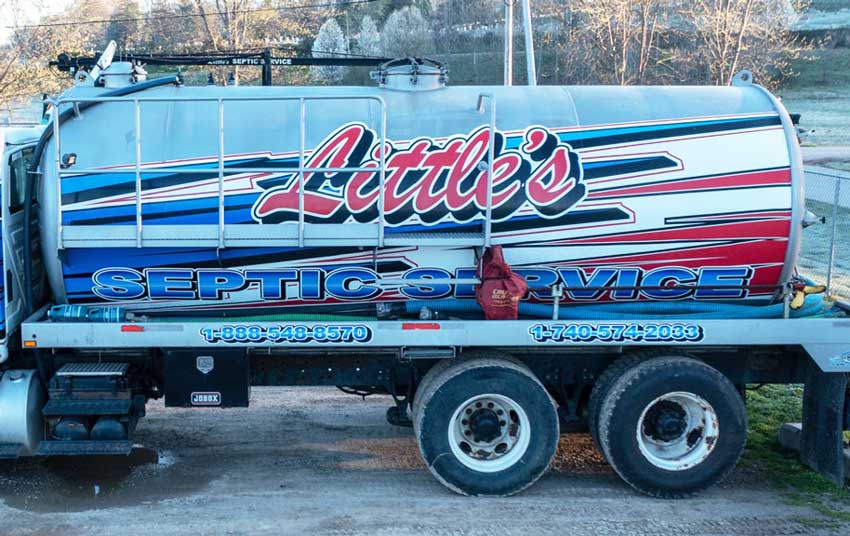Stillwell Septic And Grading Things To Know Before You Buy
Stillwell Septic And Grading Things To Know Before You Buy
Blog Article
Facts About Stillwell Septic And Grading Uncovered
Table of ContentsThe Buzz on Stillwell Septic And GradingThe Stillwell Septic And Grading IdeasGetting The Stillwell Septic And Grading To WorkAbout Stillwell Septic And GradingThe Single Strategy To Use For Stillwell Septic And GradingAll About Stillwell Septic And GradingSome Known Facts About Stillwell Septic And Grading.
Home owners need to additionally enlighten themselves on the basics of septic systems to ensure they make educated choices throughout the setup procedure - Setpic System Repairs. Septic systems are a crucial part of many homes that are not attached to a municipal drain system. They are created to deal with and dispose of house wastewater on-site
The septic storage tank is a big, underground container made of concrete, fiberglass, or plastic. The container separates the strong waste from the fluid waste.
What Does Stillwell Septic And Grading Mean?
It is likewise vital to preserve water and stay clear of overwhelming the system. Simple measures such as taking care of dripping faucets and toilets, mounting low-flow showerheads and bathrooms, and spreading out washing tons can help decrease water usage and extend the life of the septic system.
The topography of the website is likewise assessed to make certain that the septic tank is installed at the right elevation. https://www.twitch.tv/stillwellsag/about. The system should be set up at a higher elevation than the surrounding area to avoid contamination of the surrounding environment. Setbacks are the minimal ranges required by regulation in between the septic tank and various other frameworks or functions such as wells, buildings, and home lines
The suggested altitudes of the system are established based upon the results of the soil analysis and topography assessment. The altitudes will ensure that the septic tank works correctly, and wastewater is successfully treated - Stillwell Septic. Finally, a site assessment is a critical step in septic container setup. It ensures that the septic system is mounted in one of the most ideal location, considering the soil, topography, and obstacles.
More About Stillwell Septic And Grading
Before setting up a septic container, home owners need to acquire permits and follow policies. The policies differ depending upon the state, county, and community. Therefore, it is vital to consult the regional wellness division or structure department to ensure compliance. Some of the permits and regulations that property owners need to take into consideration consist of:: House owners require to obtain a license from the regional wellness division or building division before setting up a septic system.
Some municipalities may need a minimum lot size for septic system installation.: Homeowners require to comply with environmental guidelines when setting up a septic system. https://penzu.com/p/f8e3ffda9010af9e. For instance, click this site some states may call for an environmental impact evaluation before setting up a septic system.: Property owners need to adhere to building regulations when setting up a septic system.
7 Simple Techniques For Stillwell Septic And Grading
Some municipalities might call for periodic inspections and pumping of the septic container. It is vital for property owners to get licenses and conform with laws prior to mounting a septic system.
Among the most crucial variables to think about when picking a septic system is the size. A septic system that is too small for the home's needs will certainly require even more regular pumping, while a container that is also huge can cause extreme water accumulation and potential system failure. A basic guideline is that the tank should be able to hold at the very least 2 days' worth of wastewater.
The Buzz on Stillwell Septic And Grading

It's likewise crucial to think about the kind of system the septic storage tank will be utilized with. There are two major kinds of septic systems: gravity and pressure.
Fascination About Stillwell Septic And Grading
Generally, choosing the appropriate septic tank for a home is a vital choice that calls for careful factor to consider. Prior to installing a septic tank, home owners should take certain steps to prepare for the installment procedure.
Right here are some crucial safety and security measures to adhere to: Put on protective equipment: Home owners must put on protective gear, such as handwear covers, boots, and headgears, to avoid injury throughout the installment procedure. Avoid electric lines: Home owners must avoid digging near electric lines to stop electrocution. Use caution when operating hefty equipment: House owners need to use caution when running hefty equipment to avoid crashes and injuries.
Indicators on Stillwell Septic And Grading You Need To Know
By adhering to these important steps, home owners can ensure a successful sewage-disposal tank installment procedure. Sewage-disposal tank installation is a crucial process that needs cautious planning and execution. Property owners who are setting up a septic system for the initial time ought to understand the important actions associated with the process to ensure that their septic system functions efficiently and efficiently.

Report this page